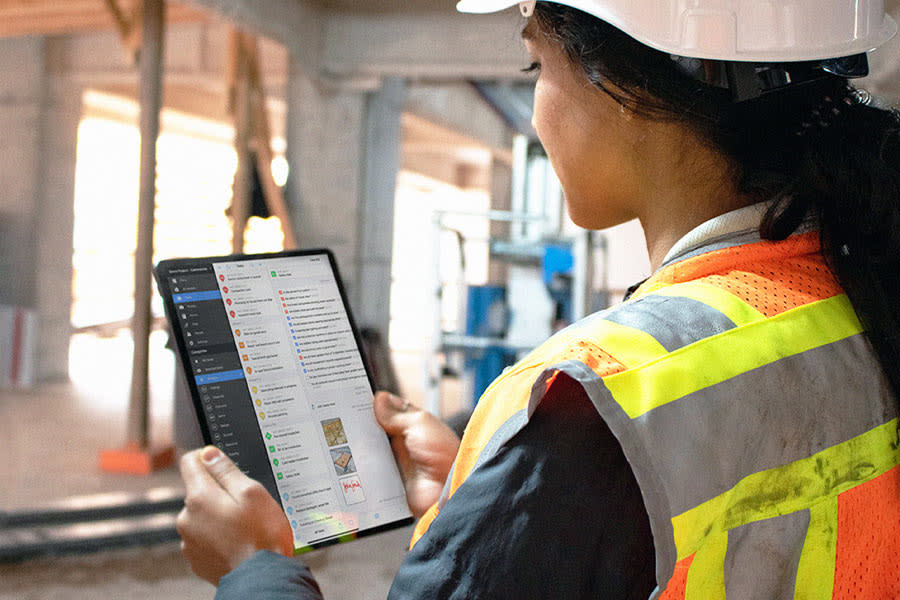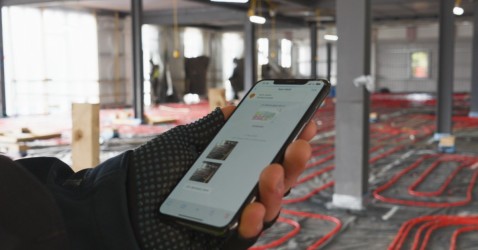10 Key strategies for effective construction management in 2025

Subcontractors are the specialists responsible for delivering quality work on time and within budget. However, with the jumbling pressures of tight deadlines, complex designs and constantly changing regulations, staying on top of everything can feel overwhelming — even for the most experienced in the industry.
Fortunately, the latest advancements in technology are transforming how you can manage construction projects efficiently. Discover 10 critical strategies you can implement to make innovative technologies your ultimate ally in 2025.
1. Efficient task delegation
One person can’t do everything themselves, so you must master delegation. However, this isn’t simply instructing people on what they should do. Instead, it’s about ensuring they are knowledgeable and capable of carrying it out.
Without an efficient system for delegating tasks, work can easily pile up and team members may not know what they’re supposed to prioritize when bombarded with lengthy to-dos. This lack of structure can lead to missed deadlines, duplication of efforts or even safety risks. Automation tools can help you delegate more effectively as they enable assigning tasks, tracking progress and receiving notifications when work is completed.
Additionally, augmented reality (AR) systems allow you to give workers detailed virtual guides for tasks, reducing confusion and ensuring things are completed accurately the first time.
2. Strategic project planning
Poor planning is the bane that causes project delays and cost overruns. Without a clear roadmap for how things should go, it’s challenging to stay on schedule and within budget.
Tech such as project management apps can dramatically improve your project planning. New cutting-edge trends and tools are on the horizon, like IoT-integrated smart cities, 3D printing and green construction. These provide subcontractors with powerful ways to create detailed timelines, manage budgets and track resources in real time. You can use digital scheduling tools to track progress in one unified platform. This makes it easier for everyone involved in the project to view and adjust as needed, ensuring you never miss a crucial deadline.
3. Effective time management
Wasted time is also among the problems that construction projects suffer from — whether due to miscommunication, inefficient scheduling or slow progress monitoring. Solutions include time-tracking software and drones for site analysis. Various apps allow you to monitor worker hours, helping to avoid overtime costs and keep projects on schedule.
In addition, drones equipped with imaging technology allow for ultra-precise aerial surveys, helping you monitor project progress without wasting time on manual site inspections.
4. Systematic contract organization
Keeping track of important documents such as project contracts is crucial from beginning to end. Read these documents carefully to ensure you know which obligations to fulfill and that your understanding of the project follows the specifications and scope of work. Misunderstanding or missing important details can lead to errors, disputes or costly delays.
Building information modeling (BIM) is essential for managing contract documents. BIM allows you to view detailed 3D models of the project, including all architectural, structural and mechanical details. This leads to a more accurate and thorough understanding of reducing task execution delays.
5. Effective communication
According to one study, having a clear communication plan contributes to at least 70% of a project’s timely success. Without proper systems in place, messages can easily get lost, forgotten or misunderstood.
Collaboration tools can facilitate real-time communication between you and your teams. These platforms allow for quick exchanges like file sharing and direct messaging, lessening the chances of miscommunication. AR/VR technologies also enable immersive experiences that allow teams to virtually walk through designs and communicate their vision, leading to fewer misunderstandings during construction.
6. Digital systems automation
Modern problems require modern solutions, and you can’t be successful in today’s construction industry without going digital. Manual processes are time-consuming and prone to human error. Transitioning to digital construction management systems allows you to keep up with the demands of modern construction. Cloud-based platforms let you store and process documents and collaborate with stakeholders remotely.
7. Persuasive negotiations
Subcontractors are often caught in the middle, negotiating with general contractors and suppliers. Without accurate data, it will be challenging to secure favorable pricing or terms, which might leave you vulnerable to cost overruns or thin margins.
Data analytics and cloud-based project management tools can empower you by providing a clear-cut view of costs, timelines and labor needs. By understanding labor costs, material price fluctuations and potential risks, you can approach negotiations armed with precise numbers and make better-informed decisions.
Imagine being able to show a general contractor how a proposed material substitution could save time and money, backed by data from your software. This shifts the power dynamic, making you a strategic partner instead of a passive participant in the project.
8. Ground presence visibility
There is often a disconnect between what’s happening on the ground and what’s being communicated to contractors and clients. This lack of visibility can lead to misaligned expectations and errors that are expensive to fix.
Internet of Things (IoT) technology bridges this gap by providing real-time insights into on-site activities. Sensors on equipment monitor usage, maintenance needs and overall efficiency. Wearables can also track worker safety and productivity. Think of the convenience of having devices alerting you if equipment is overheating or workers are exceeding safe vibration exposure levels while operating tools.
While this tech offers great help in leading your team, being present on-site is still among the most effective ways to link the divide. When paired with efficient technology, this hands-on approach will help you evaluate productivity, monitor safety conditions and identify challenges early before they become disruptive.
9. Expenses optimization
Razor-thin margins are often expected with your role, and no matter how experienced you may be, it helps to optimize project costs more effectively. Unexpected expenses such as material price hikes or overtime wages can quickly erode profitability. Manually tracking your costs also makes it hard to predict or control the flow. AI-powered tools and automated cost-management systems can help.
Many advanced financial tools automatically flag potential budget overruns and offer updates on predicted expenses. They use predictive analytics to forecast future costs based on past projects, helping you allocate resources more efficiently. Artificial intelligence (AI) can also help you manage supply chain and logistics to avoid costly overtime.
Identify cheaper suppliers without compromising quality or suggest schedule adjustments to avoid overtime expenses.
10. Staff safety prioritization
Construction sites remain among the most dangerous workplaces, and you’re often held responsible for the safety of your crews. Accidents can lead to legal liabilities and a damaged reputation, none of which you want to be associated with. According to research from Focus Four, incident fatality statistics remain high — falls account for 35% of deaths, with struck-by incidents coming in at 17% and electrocution at 7.6%, all of which can be avoided by following workplace safety laws and routine testing to uncover risks and faulty systems.
Embracing smart safety technologies can help you create a safer work environment. Wearable devices like safety vests with built-in sensors can monitor workers’ heart rates and environmental conditions, alerting supervisors to potential risks in real time. For example, if a worker’s wearable device detects excessive heat exposure, it T immediately. Employing these technologies shows your commitment to safety and enhances your credibility with contractors.
Sharpen your competitive edge in 2025
For subcontractors, the challenges of managing costs, meeting tight deadlines and ensuring worker safety are compounded by your position in the construction hierarchy. Fortunately, technology offers robust solutions, enabling you to take control of your operations and thrive in an increasingly competitive industry.
Integrating data analytics, IoT devices, AI tools and smart safety technologies into your workflows allows you to negotiate more effectively, monitor on-site activities in real time, optimize expenses and prioritize safety. These tools improve efficiency and position you as a forward-thinking subcontractor who is prepared for the demands of 2025 and beyond.

 Rose Morrison •
Rose Morrison • 



















